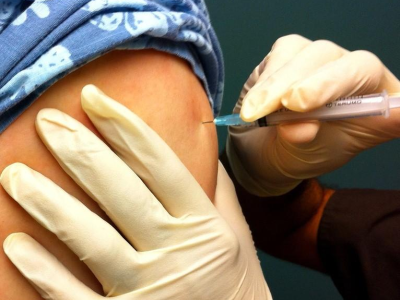Wendy's urged to cut use of medically important antibiotics in beef supply
Consumer and public health advocacy group U.S. PIRG Education Fund is calling on the nation's third-largest burger chain to reduce its reliance on beef raised with the routine use of medically important antibiotics.
The group held events today in front of Wendy's franchises in New York and Chicago to urge the restaurant chain to follow the lead of McDonald's, which announced in December 2018 that it would partner with its beef suppliers to reduce the use of medically important antibiotics for disease prevention in its beef supply chain. McDonald's was the first major burger chain to release a policy on antibiotic use in beef.
Wendy's is one of several fast-food chains that have stopped serving chicken raised with medically important antibiotics, and it currently sources up to 20% of its beef from suppliers that have cut the use of the antibiotic tylosin in their cattle. But Matt Wellington, director of U.S. PIRG's Stop the Overuse of Antibiotics campaign, which has pushed several restaurant chains to reduce routine use of medically important antibiotics in their meat supply chains, says the company can do more.
"We can't waste life-saving medicines to produce cheap beef," Wellington said in a U.S. PIRG (Public Interest Research Group) press release. "The cost to our health is too high, and Wendy's can use its buying power to help move the beef industry away from overusing antibiotics."
Mar 28 U.S. PIRG press release
Former UK advisor on antibiotic resistance criticizes drug industry
Lord Jim O'Neill, an economist and former advisor to the British government on antibiotic resistance, suggested yesterday that nationalizing part of the pharmaceutical industry may be a way to stimulate new antibiotic development.
O'Neill—former chair of the British government's Review on Antimicrobial Resistance—told BBC News that he was shocked that pharmaceutical companies have failed to develop new antibiotics for drug-resistant infections. He suggested that the answer may be for the government to create a new public body to acquire the antibiotic research and development programs that many drug companies have been abandoning.
"If you had asked me three years ago, I would have thought that would have been a bit crazy," O'Neill told the BBC. "But nearly three years after our review came out, there's endless talk but there's no progress in waking up the pharmaceutical industry to want to do this.
"So, by default, I find my mind thinking why not explore the idea of some public utility that's got public-purpose ownership of it, just take it away from them and take it over," he said.
A 2015 report by the Review on Antimicrobial Resistance called for creating a $2 billion global innovation fund to boost investment in new antibiotic research and development, and suggested that from $1.6 billion to $3.7 billion a year would be needed to provide "pull" incentives to encourage drug companies to develop new antibiotics. The first report by the group warned that antimicrobial resistance could kill an extra 10 million people a year, and cost up to $100 trillion, by 2050 if nothing is done to slow or halt it.
In January, the British government announced a new payment model for antibiotics, under which the National Health Service would pay pharmaceutical companies up front for access to effective antibiotics. The government hopes the model, which aims to delink the value of antibiotics from sales volume, could help spur new antibiotic development.
Mar 27 BBC News story
Review: Cefazolin an option for methicillin-sensitive staph bacteremia
A systematic review and meta-analysis of data from more than 11,000 patients published yesterday in Clinical Microbiology and Infection suggests that cefazolin is at least equally effective as anti-staphylococcal penicillins (ASP) in treating methicillin-sensitive Staphylococcus aureus bacteremia (SAB), and associated with less nephrotoxicity.
The review looked at 14 non-randomized studies on the effects of cefazolin versus ASP in patients with methicillin-sensitive SAB, and a meta-analysis was conducted to estimate relative risk (RR) of the two treatments on the primary end point—90-day all-cause mortality. Secondary end points included 30-day all-cause mortality, treatment failure/relapse, and nephrotoxicity. The researchers also looked at outcomes in a subset of patients with high pathogen loads, including those with endocarditis and abscesses.
Seven of the studies reported the primary end point and showed an overall 90-day mortality of 25.1% (703/2,802) in the ASP group and 18.2% (289/1,589) in the cefazolin group, resulting in an RR of 0.71 (95% confidence interval [CI], 0.50 to 1.02). For the secondary end points, the researchers found that cefazolin may be associated with lower 30-day mortality (RR, 0.70; 95% CI 0.54 to 0.91) and less nephrotoxicity (RR, 0.36; 95% CI, 0.21 to 0.59), but they were uncertain whether cefazolin and ASP differ regarding treatment failure/relapse (RR, 0.84; 95% CI, 0.59 to 1.18), as the quality of the evidence was very low.
The subgroup analysis showed that cefazolin may be associated with equal 30-day and 90-day mortality for patients with endocarditis (RR, 0.71; 95% CI, 0.12 to 4.05) and abscesses (RR, 1.17; 95% CI, 0.30 to 4.63).
The authors say the main limitation of the review is that all the available evidence comes from non-randomized, single-center studies with an inherent high risk of bias. They suggest multicenter randomized controlled trials are needed to identify the safest and most effective treatment for patients with SAB.
Mar 27 Clin Microbiol Infect abstract











